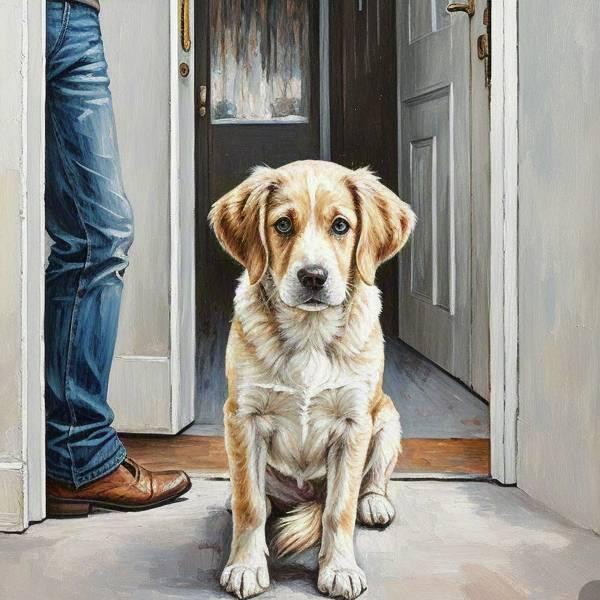Why Do Dogs Get Separation Anxiety? Understanding the Causes and Solutions
Separation anxiety in dogs is a common behavioral issue that can cause significant distress for both pets and their owners. As a loving dog owner, it's important to understand why dogs get separation anxiety so you can take the necessary steps to help your furry friend. In this article, we will explore the causes, symptoms, and practical solutions for separation anxiety in dogs, allowing you to help your dog feel more comfortable when left alone.

What is Separation Anxiety in Dogs?
Separation anxiety in dogs refers to a condition where a dog experiences extreme distress when separated from their owner or primary caregiver. This anxiety is not just about missing you for a short time—it manifests in destructive behaviors, excessive barking, howling, and sometimes even house soiling. Understanding why dogs get separation anxiety can help address this issue with appropriate care and training.
Why Do Dogs Get Separation Anxiety?
There are several reasons why dogs get separation anxiety. It’s often linked to changes in a dog’s routine, environment, or relationships. Here are some common causes:
1. Change in Environment or Routine
Dogs are creatures of habit, and any change in their environment or daily routine can trigger separation anxiety. Moving to a new house, the addition of a new family member, or even a change in your work schedule can cause your dog to feel unsettled and anxious.
2. Past Trauma or Abandonment
If a dog has experienced abandonment or trauma in the past, they may develop separation anxiety as a defense mechanism. Dogs that were once abandoned or surrendered to a shelter may struggle with being left alone, as they fear they will be abandoned again.
3. Lack of Socialization or Training
Some dogs may not have been properly socialized or trained to handle being alone. Puppies or dogs raised in environments where they were never left alone might not know how to cope with being separated from their owner, leading to separation anxiety.
4. Strong Attachment to Their Owners
Some dogs form strong emotional bonds with their owners, and when they’re left alone, they may feel insecure. This deep attachment can contribute to anxiety and stress during times of separation.
5. Age and Health Issues
Older dogs or dogs with health problems may experience increased anxiety when left alone. As dogs age, their cognitive function may decline, and they may become more dependent on their owner, making them more prone to separation anxiety.
6. Genetics and Breed
Certain breeds are more prone to separation anxiety due to their genetic predisposition. Breeds like Border Collies, German Shepherds, and Cocker Spaniels are known for being highly attached to their owners, which may increase the likelihood of separation anxiety.
Symptoms of Separation Anxiety in Dogs
Recognizing the symptoms of separation anxiety in dogs is the first step in addressing the issue. Common signs include:
-
Excessive barking or howling when left alone.
-
Destructive behavior, such as chewing furniture, doors, or windows.
-
Pacing in circles or constant restlessness.
-
House soiling (urinating or defecating inside the house) even if they’re house-trained.
-
Drooling or panting excessively.
-
Escaping attempts, like trying to dig or break through doors and windows.
If you notice any of these behaviors, it’s important to seek help from a veterinarian or a professional dog trainer to address separation anxiety.
How to Help a Dog with Separation Anxiety
Fortunately, there are several steps you can take to help your dog overcome separation anxiety. Here are some practical solutions:
1. Gradual Desensitization
Start by leaving your dog alone for short periods and gradually increase the duration. This allows your dog to slowly adjust to being left alone without feeling overwhelmed. Gradual desensitization helps your dog understand that being alone is not a permanent or negative experience.
2. Provide Mental Stimulation
Before you leave, give your dog a stimulating puzzle toy or treat to keep them occupied. This can help distract them from their anxiety and keep their mind engaged while you’re gone.
3. Create a Safe Space
Designate a safe space for your dog, such as a cozy crate or a small room with their favorite blanket or toys. Having a safe space can help your dog feel secure when left alone.
4. Exercise and Playtime
Ensure your dog gets plenty of exercise and mental stimulation throughout the day. A tired dog is less likely to experience anxiety, so make sure they are well-exercised before you leave the house.
5. Avoid Long Farewells and Greetings
When leaving or returning home, keep your farewells and greetings low-key. Long goodbyes or over-the-top greetings can increase your dog’s anxiety, as they’ll associate these moments with stress.
6. Consult a Veterinarian or Trainer
If your dog’s separation anxiety is severe, it’s important to consult a veterinarian or a professional trainer. In some cases, medication may be necessary to help manage your dog’s anxiety, in combination with training and behavior modification.
Conclusion
Separation anxiety in dogs is a serious issue that can cause significant stress for both dogs and their owners. Understanding why dogs get separation anxiety is the first step in addressing the problem. Whether it's due to environmental changes, past trauma, genetics, or strong attachment to their owner, there are solutions to help your dog feel more comfortable when left alone.
By providing a stable routine, gradual desensitization, mental stimulation, and proper training, you can help your dog overcome separation anxiety and lead a more relaxed and happy life. Remember, patience and consistency are key in helping your dog manage their anxiety.